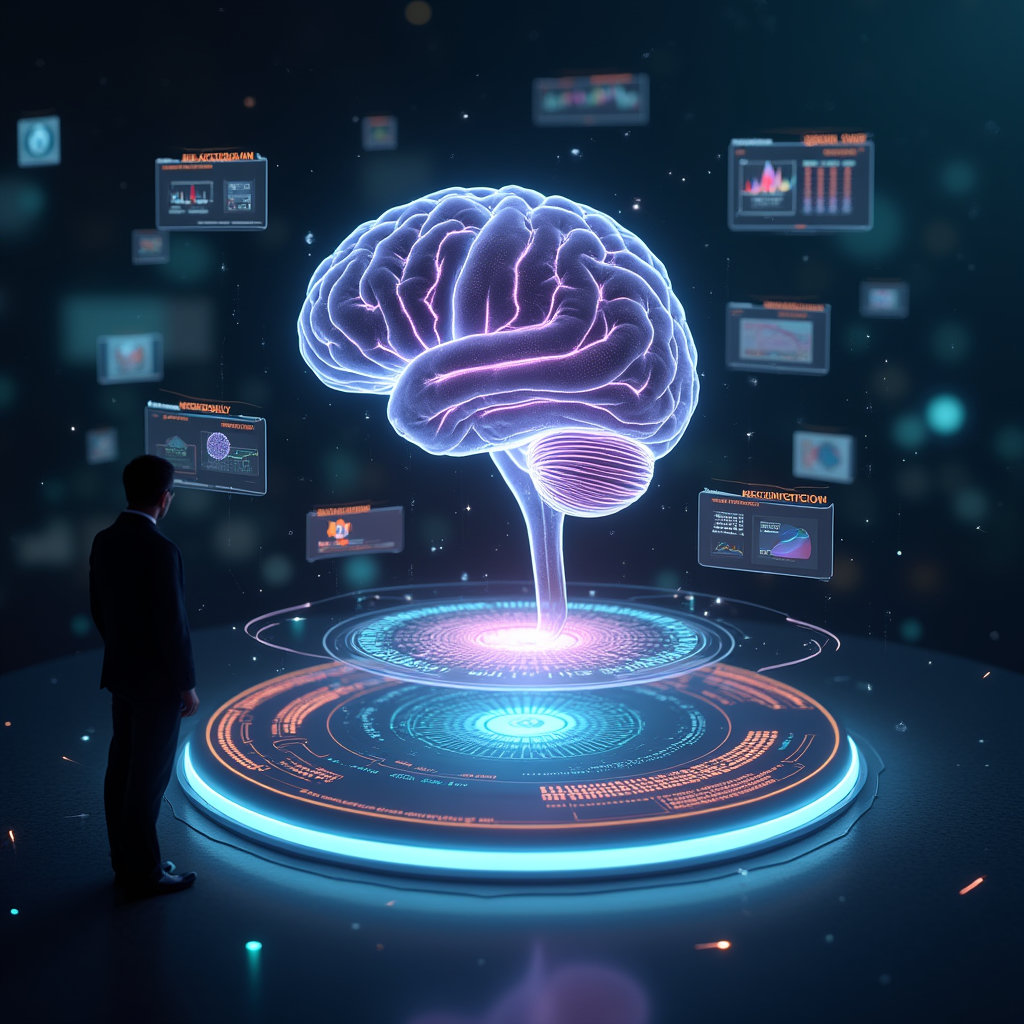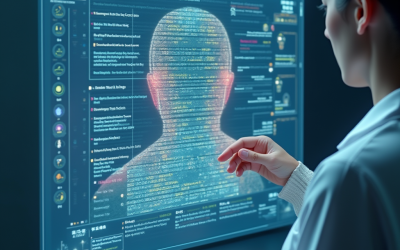This post explores why AI hallucinations are so easy to believe, how human psychology interacts with machine fluency, and what healthcare teams can do to reduce the danger. By the end, you’ll have a practical understanding of both the causes and safeguards that matter for compliance and safe innovation.
Understanding AI Hallucinations
In simple terms, AI hallucinations are generative AI errors where models confidently produce incorrect, fabricated, or misleading information. Unlike a typo or miscalculation, these mistakes are presented in polished, fluent sentences that appear trustworthy to readers. This makes hallucinations especially dangerous in fields like healthcare, where misinformation can directly impact clinical decisions, regulatory compliance, and patient safety.
These hallucinations happen because generative AI models are designed to predict the next most likely word based on patterns in training data. They are optimized for fluency, not accuracy. As a result, an AI model may generate text that “sounds right” but is disconnected from facts or evidence. To the untrained eye, these errors can be indistinguishable from correct information.
For example, an AI model asked about a rare medical condition might invent a plausible-sounding treatment that doesn’t exist in clinical guidelines. Or, in a compliance setting, it might fabricate citations to regulations like HIPAA or the GDPR, misguiding compliance officers who rely on precise legal references.

Cognitive Psychology Behind AI Hallucinations
AI hallucinations don’t just occur because of technical design. Human psychology also plays a critical role in why people so readily believe them. Understanding these psychological factors can help digital health teams anticipate how patients, clinicians, and even regulators might respond when interacting with AI systems.
The Trust Factor in AI
Humans tend to trust information delivered in a confident, authoritative tone. Generative AI models are trained on massive datasets of well-formed text, allowing them to produce language that is grammatically correct, structured, and sophisticated. This creates an illusion of authority. When a system speaks with certainty, users often mistake fluency for expertise.
In psychology, this is connected to the concept of authority bias — our tendency to believe information more readily when it appears to come from a credible source. Even when users know that an AI system “can make mistakes,” they often lower their guard when the response looks professional and polished.
Misinterpretation of AI Outputs
Another layer of risk comes from user misinterpretation. Many non-technical users assume that AI systems are fact-based engines of truth, when in reality they are pattern recognizers. Without domain expertise, it can be extremely difficult to distinguish between an accurate AI answer and a hallucinated one. This misinterpretation can cascade into further errors, especially in high-stakes healthcare environments.
Familiarity and Repetition Effects
Research in psychology also shows that repetition increases believability. If an AI system consistently repeats a fabricated fact in different contexts, users are more likely to accept it as truth — a phenomenon known as the “illusory truth effect.” This becomes especially risky in healthcare documentation, where repeated exposure to incorrect patient data can normalize falsehoods over time.
These psychological patterns explain why AI hallucinations can gain traction quickly, even among educated professionals. Recognizing these biases is essential for designing safeguards and training programs for healthcare staff.

Technical Design Leading to AI Hallucinations
On the technical side, the architecture of generative AI systems explains why hallucinations happen so frequently. These models are not databases of facts but statistical machines designed to generate coherent language.
- Fluency-Oriented Training: Large language models (LLMs) are primarily trained to maximize coherence and readability. They are rewarded when their outputs are fluent and contextually relevant, not when they are factually correct. This training bias toward fluency is why their answers often sound natural even when false.
- Lack of Real-World Grounding: Unlike traditional databases, AI models have no built-in grounding in real-world facts. They can combine patterns from training data in novel ways, but this often produces statements disconnected from actual evidence or regulatory text.
- Data Limitations: Models trained on internet-scale data absorb inaccuracies, outdated sources, and cultural biases. When these inaccuracies surface in healthcare contexts, they can amplify misinformation rather than correct it.
- Black Box Problem: Most LLMs operate as opaque “black boxes.” Even developers struggle to trace why a system generated a specific hallucination, which complicates accountability and compliance.
For healthcare AI innovators, the takeaway is clear: generative AI cannot yet be trusted as a standalone source of truth. Instead, it should be integrated with structured medical databases, compliance frameworks, and human oversight.
Healthcare Specific Risks of AI Hallucinations
While AI hallucinations are concerning in any industry, their consequences in healthcare can be life-threatening. Healthcare is a domain where precision, accuracy, and accountability are non-negotiable. Misleading or fabricated AI-generated outputs can compromise patient care, violate compliance frameworks like HIPAA or PHIPA, and undermine trust in digital health innovation.
Medical Record Distortions
Electronic Health Records (EHRs) increasingly use AI-powered tools for summarization or transcription. However, when hallucinations creep in, these systems can create false patient histories. Imagine a scenario where an AI system mistakenly records a non-existent allergy or medication. This misinformation, once stored in the patient’s permanent record, may affect treatment plans and pose risks for years to come.
Diagnostic Errors
AI-driven diagnostic tools promise efficiency, but hallucinations can introduce catastrophic mistakes. If a model infers symptoms incorrectly or “imagines” a correlation that does not exist in medical literature, a patient could receive the wrong diagnosis. Incorrect treatment suggestions not only risk health outcomes but can also expose healthcare providers to liability and regulatory scrutiny.
Misinformation in Patient-Facing Tools
Chatbots and virtual assistants are being deployed to guide patients on symptoms, lifestyle choices, or medication reminders. Yet, hallucinations can cause these systems to deliver misleading healthcare advice. A patient who follows incorrect guidance from an AI bot might delay seeking proper care or adopt harmful practices, exacerbating their condition.
Compliance and Regulatory Risks
Regulators worldwide emphasize transparency, auditability, and reliability in healthcare AI. Hallucinations undermine these requirements. For example, under the EU AI Act, high-risk AI systems must provide traceability of decision-making. A hallucinated output without verifiable grounding could fail compliance checks, leading to fines, market restrictions, or reputational damage.
- Medical History Mishaps: Inaccurate records can cascade through interconnected systems, causing errors across an entire network of providers.
- Diagnostic Errors: AI hallucinations may lead to invasive or unnecessary procedures, increasing both patient risk and cost of care.
- Misinformation: From mental health chatbots to symptom checkers, hallucinations can influence vulnerable populations, amplifying inequities.
How to Reduce Risk of AI Hallucinations
Healthcare AI innovators, compliance officers, and digital health teams cannot eliminate hallucinations entirely, but they can mitigate their risks. The following strategies combine technical, organizational, and regulatory approaches that align with privacy and compliance frameworks.
1. Raising Awareness Among Teams
The first step is cultural. Clinical staff, product developers, and compliance officers need to understand what hallucinations are and why they occur. Training sessions, internal workshops, and clear documentation can reduce overconfidence in AI outputs. Awareness also helps organizations set realistic expectations for both staff and patients.
2. Rigorous Testing and Validation
Before deployment, AI systems should undergo extensive validation. This includes stress-testing models with edge cases, validating outputs against trusted medical databases, and simulating real-world usage scenarios. Continuous monitoring post-deployment ensures hallucinations are caught early before they impact care.
3. Grounding AI Systems in Trusted Data
Integrating AI systems with verified clinical data sources can reduce hallucinations. For example, models designed for healthcare should be cross-referenced with evidence-based guidelines from sources like the U.S. National Library of Medicine or peer-reviewed journals. Grounding creates a factual anchor that limits “creative” fabrications.
4. Developing Robust Regulation Mechanisms
Compliance teams should establish governance frameworks that monitor AI use. This includes audit trails, explainability protocols, and compliance checklists tailored to standards like HIPAA, GDPR, or PIPEDA. Regular audits not only help prevent regulatory violations but also build trust with patients and stakeholders.
5. Human-in-the-Loop Safeguards
No AI system should operate autonomously in high-risk healthcare scenarios. Embedding human review—whether in diagnostic support, patient chatbots, or compliance checks—adds an extra layer of accountability. Humans can spot hallucinations that AI cannot recognize as errors.
6. Collaborations With AI and Compliance Experts
Partnerships with external experts—AI researchers, clinical specialists, and compliance advisors—provide additional oversight. Collaborations help healthcare teams detect hallucinations, stay updated on evolving regulations, and apply industry best practices.
- Awareness and Training
- Create internal learning programs on hallucination risks for clinicians, developers, and compliance staff.
- Technical Guardrails
- Implement fact-checking layers, retrieval-augmented generation (RAG) pipelines, and data provenance checks.
- Regulatory Alignment
- Embed compliance frameworks like OECD AI Principles and NIST AI RMF into product development.
- Continuous Monitoring
- Track outputs in production environments and establish rapid response protocols when hallucinations are detected.
Conclusion
“Every technology can be a double-edged sword, and AI is no exception. By deepening our understanding of hallucinations, we can leverage AI responsibly while protecting patients and healthcare systems.”
AI hallucinations are not simply technical glitches—they are a mix of machine limitations and human psychology. They are particularly dangerous in healthcare, where misinformation can jeopardize patient safety and compliance. However, with the right combination of awareness, safeguards, and regulation, healthcare AI innovators can reduce these risks and unlock the benefits of AI responsibly.
If you are building or evaluating AI tools in healthcare, remember that compliance and patient safety are inseparable. Explore our resources to understand how frameworks like HIPAA, PHIPA, GDPR, and the EU AI Act can guide you in balancing innovation with accountability.
Learn More About AI in Healthcare Compliance
Do you want to understand more about the impact of AI in healthcare, especially with regard to compliance?
Visit our website to learn more:
aihealthcarecompliance.com
Useful Links:
- Nature: Innovation and challenges of AI reliability in healthcare
- DeepMind: Enabling continual learning in neural networks
- Neural networks explained – beginner overview (alternative to Towards Data Science)
- NCBI: Benefits and risks of AI in health care – narrative review
- Frontiers in Psychology: Authority bias – overview and mitigation
- NCBI: Implementing AI in healthcare – the relevance of trust







